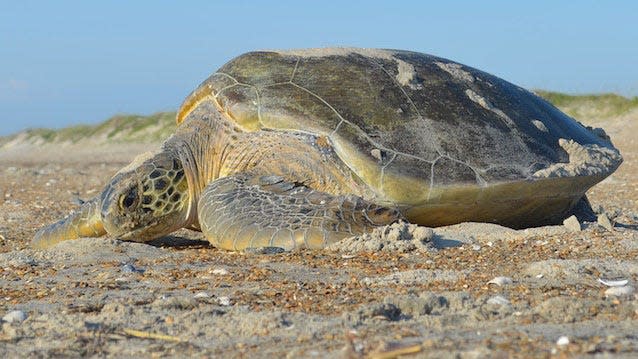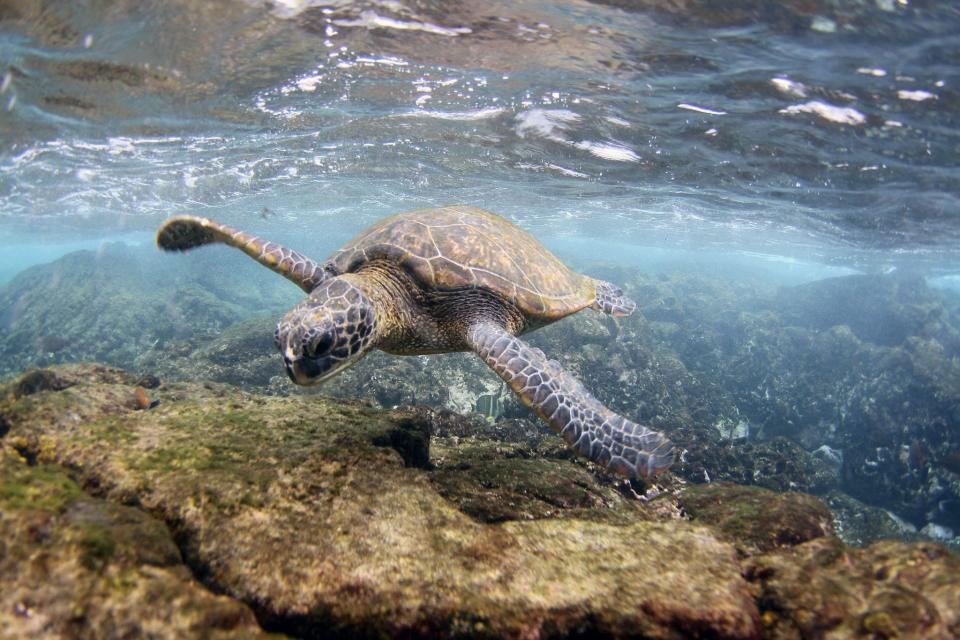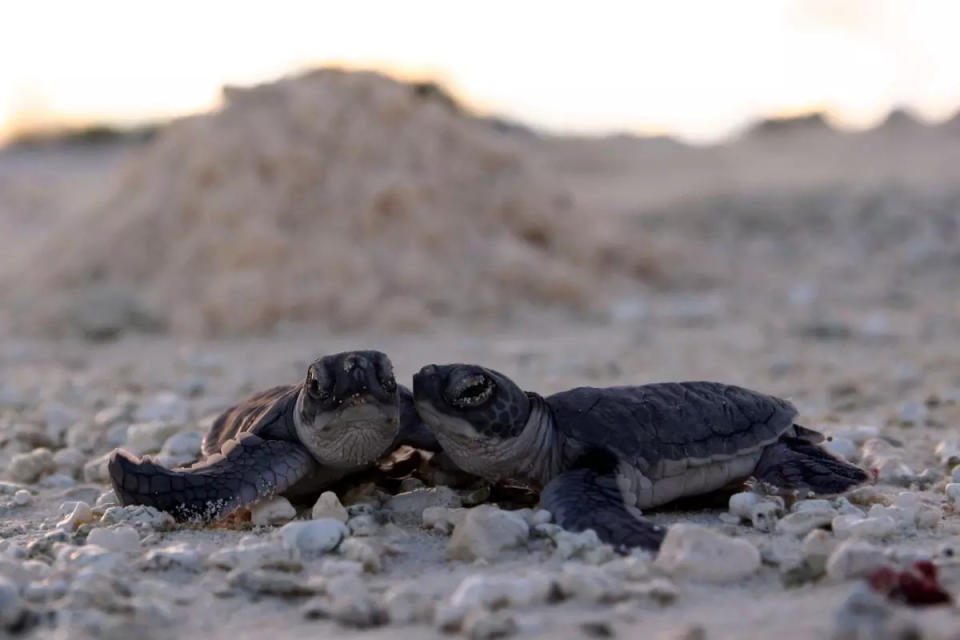A win for conservation? NC sees record number of green sea turtle nests in 2023

They aren't exactly unknown visitors to North Carolina's beaches, but they certainly aren't frequent guests.
So why did green sea turtles choose 2023 to nest on Tar Heel State beaches in record numbers?
While researchers don't believe there's one specific reason, they are excited to see the numbers jump − especially since as recently as the early 2000s North Carolina was lucky to see a dozen or so green nests.
"We hope that conservation efforts started years ago have contributed to increasing populations of sea turtles in North Carolina and elsewhere," said Dr. Matthew Godfrey, a sea turtle biologist with the N.C. Wildlife Resources Commission, via email. "All sea turtle species that occur in the U.S. remain protected by federal and state laws, so their populations can continue to recover."
What are green sea turtles?
Green sea turtles are not only one of the largest species of sea turtles, weighing up to 500 pounds and pushing 4 feet in length, they also are herbivores, munching on sea grasses and algae for sustenance. According to NOAA Fisheries, this diet is what gives their fat a greenish color and where their name comes from − not from the color of their shells.
While found across much of the globe's oceans, green sea turtles for centuries were considered a delicacy for their meat and eggs. That led of a precipitous decline in the turtles numbers, and recovery efforts in recent decades have been hampered by the loss of nesting habitat, fatal interactions with fishing gear, vessel strikes, and changing habitats tied to climate change.
According to NOAA, a warming climate is likely playing a role in the turtle's nesting cycle. Godfrey said peak nesting season for green turtles tends be a little bit later in the summer compared to loggerheads, which means green turtle eggs tend to incubate later into fall months in North Carolina.
WHERE ARE THE BOYS? NC sea turtle nests could be producing fewer males. Here's why that's a huge problem.
"Climate change may increase the likelihood of late-season green turtle nests being able to produce hatchlings, if the sand temperatures are warm enough in the fall and early winter," he said.
While that's a potentially good development, warmer sand temperatures could also can be lethal to eggs or alter the ratio of male and female hatchlings produced. Rising seas and storm events tied to climate change also can wash away beach areas used for nesting, and warming ocean temperatures can stress the turtles by altering the abundance and distribution of food resources.
While occasional visitors to North Carolina waters, greens are most commonly spotted in Hawaii, Florida, the U.S. Virgin Islands and Puerto Rico.

How common are green nests in North Carolina?
In short, it's still very special to come across one on your local beach.
According to wildlife commission statistics, North Carolina saw 1,725 nests in 2023. Of those, nearly 94% (1,619) were loggerhead sea turtle nests. Less than 6% (95) were green nests, with the remainders split between leatherback and Kemp's Ridley turtles. Godfrey cautioned that while the numbers are preliminary until a final inspection can be made, the numbers are not expected to see much fluctuation.
NESTING WOES From boats to beaches, challenges facing sea turtles as nesting season starts in NC
The average number of green turtle nests laid in North Carolina prior to 2010 was 11. From 2010 to 2022, the annual average was 32 nests. The previous record before 2023 was 62 green nests in 2019.
Of the green nests in 2023, the vast beaches of Cape Hatteras National Seashore on the Outer Banks saw nearly half the green nests. Next in popularity with the turtles, in declining order, were Cape Lookout National Seashore, the northern Outer Banks, and Pea Island National Wildlife Refuge. In the Wilmington area, Topsail Island saw three green nests followed by Holden Beach with two nests, according to the wildlife commission.
A green also had the last sea turtle nest recorded in North Carolina this year, on Cape Hatteras on Sept. 25.

Great news for sea turtles!
More than 90 green sea turtle nests were laid in North Carolina this season, the most we've ever seen. The previous record was 62 nests in 2019.
To put this in perspective: Twenty years ago, it was a exciting to see 10-15 nests in a single season. pic.twitter.com/j25p4nbLC7— N.C. Wildlife (@NCWildlife) September 25, 2023
While greens enjoyed a bumper nesting year in 2023, they weren't the only sea turtle species to see an increase in nests in North Carolina.
Godfrey said there were six observed leatherback nests in the state this year, the highest number since 2007 when North Carolina saw eight nests. There also were five Kemp’s Ridley nests, which is typical for the past ten years. But Godfrey said loggerhead nest numbers in 2023 were higher than the average number laid between 2010-2022, which averaged 1,288 nests.
Reporter Gareth McGrath can be reached at GMcGrath@Gannett.com or @GarethMcGrathSN on Twitter. This story was produced with financial support from 1Earth Fund and the Prentice Foundation. The USA TODAY Network maintains full editorial control of the work.
This article originally appeared on Wilmington StarNews: Endangered green sea turtles set record for NC nests in 2023

